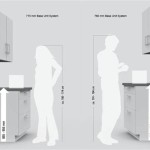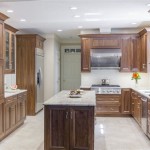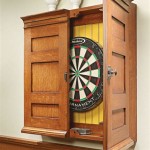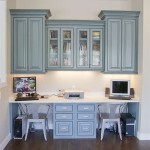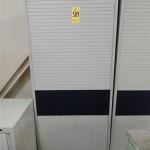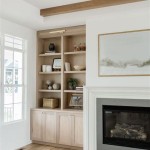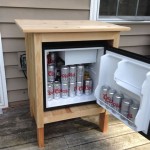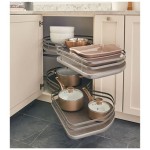The Perfect Dining Room Corner Cabinets: 8 Key Considerations
Corner cabinets are invaluable additions to dining rooms, effectively utilizing otherwise neglected space to provide storage and enhance the overall aesthetic. Choosing the ideal corner cabinet requires careful consideration of various factors, ensuring it complements the existing décor and fulfills specific storage needs. This article explores eight key considerations when selecting the perfect dining room corner cabinet.
1. Space Assessment and Measurement
Before exploring style and material options, accurately assessing the available space is paramount. Precise measurements of the corner are critical, taking into account potential obstructions such as molding, baseboards, and electrical outlets. A common mistake is underestimating the depth required, leading to a cabinet that protrudes too far into the room. Consider the angle of the corner; while most are 90 degrees, slight variations can affect the cabinet's fit. Measure the height from floor to ceiling if considering a taller, multi-tiered cabinet. It is advisable to create a template using cardboard or paper to visualize the cabinet's footprint in the corner, ensuring adequate clearance for movement and other furniture.
Furthermore, contemplate the adjacent walls. Will the cabinet interfere with the placement of a dining table, side chairs, or other existing furniture? Consider the flow of traffic within the dining room and ensure the cabinet's placement does not impede movement. Documenting these measurements and spatial considerations will significantly narrow down the options and prevent costly mistakes.
2. Functionality and Storage Requirements
The primary purpose of a corner cabinet is storage; therefore, defining specific storage needs is essential. Determine what items will be stored within the cabinet. Will it house fine china, silverware, glassware, table linens, or a combination thereof? The type and quantity of items will dictate the internal configuration of the cabinet, including the number of shelves, drawers, and compartments. Adjustable shelves offer versatility, allowing for customization based on changing storage needs. Consider the weight capacity of the shelves, especially if storing heavier items like stoneware or serving platters.
For storing delicate items such as glassware or china, consider cabinets with felt-lined drawers or shelves. Integrated lighting can also enhance the display of cherished items and improve visibility within the cabinet. If storing alcoholic beverages, a cabinet with a built-in wine rack or designated bottle storage may be desirable. Evaluate the accessibility of the storage space; ensure that items stored in the back of the cabinet are easily reachable. Bi-fold doors or rotating shelves can improve access to items stored in deeper cabinets.
3. Style and Aesthetic Compatibility
A corner cabinet should complement the existing style and décor of the dining room. Consider the architectural style of the home and the overall design aesthetic of the room. Common styles include traditional, modern, farmhouse, and contemporary. Traditional dining rooms often feature ornate cabinets with intricate detailing, such as raised panels, crown molding, and decorative hardware. Modern dining rooms typically feature sleek, minimalist cabinets with clean lines and a focus on functionality. Farmhouse styles often incorporate rustic materials like reclaimed wood and distressed finishes.
The color and finish of the cabinet should also harmonize with the existing color palette of the room. Consider the color of the walls, flooring, and other furniture. A contrasting color can create a focal point, while a complementary color will blend seamlessly with the existing décor. The hardware on the cabinet, such as knobs and pulls, should also be consistent with the overall style of the room. Metal finishes like brushed nickel, oil-rubbed bronze, or polished chrome can add a touch of elegance and sophistication.
4. Material Selection and Durability
The material of the corner cabinet significantly impacts its durability, appearance, and price. Common materials include solid wood, wood veneer, particleboard, and MDF (Medium-Density Fiberboard). Solid wood is the most durable and aesthetically pleasing option, offering natural beauty and longevity. However, it is also the most expensive. Wood veneer consists of a thin layer of real wood applied over a less expensive core material, providing a similar appearance to solid wood at a lower cost. Particleboard and MDF are engineered wood products that are more affordable but less durable than solid wood or wood veneer.
Consider the humidity levels in the dining room, as excessive moisture can damage certain materials. Solid wood can expand and contract with changes in humidity, while MDF is more susceptible to water damage. Choose a material that is appropriate for the climate and the intended use of the cabinet. The finish on the cabinet is also crucial for protecting the material from scratches, stains, and moisture. A durable finish, such as lacquer or polyurethane, will prolong the life of the cabinet and maintain its appearance over time.
5. Door and Drawer Mechanisms
The functionality of the doors and drawers is a key factor in the overall usability of the corner cabinet. Consider the type of door hinges and drawer slides. High-quality hinges should operate smoothly and quietly, allowing the doors to open and close easily. Soft-close hinges prevent slamming and protect the cabinet from damage. Drawer slides should also operate smoothly and effortlessly, even when the drawers are fully loaded. Full-extension drawer slides allow for complete access to the contents of the drawer.
The style of the cabinet doors can also impact the overall aesthetic of the dining room. Common door styles include solid doors, glass doors, and raised panel doors. Glass doors allow for the display of cherished items and add a touch of elegance to the room. Solid doors provide privacy and conceal the contents of the cabinet. Raised panel doors add depth and dimension to the cabinet and are often used in traditional-style dining rooms. The type of door handles or knobs should also be considered, ensuring they are comfortable to grip and complement the overall style of the cabinet.
6. Lighting Integration
Integrating lighting into the corner cabinet can significantly enhance its functionality and aesthetic appeal. Interior lighting improves visibility within the cabinet, making it easier to locate items, especially in dimly lit dining rooms. Consider LED lighting, which is energy-efficient, long-lasting, and emits minimal heat. LED strip lights can be installed along the shelves or inside the doors, providing even and consistent illumination. Puck lights can be used to highlight specific items, such as glassware or china.
Exterior lighting, such as spotlights or accent lights, can also be used to highlight the cabinet itself and create a focal point in the dining room. Consider the color temperature of the lighting; warm lighting creates a cozy and inviting atmosphere, while cool lighting provides a more modern and sophisticated look. Ensure the lighting is properly wired and connected to a power source. Consider using a dimmer switch to adjust the brightness of the lighting to suit the mood and ambiance of the room.
7. Budget Considerations
The price of corner cabinets can vary widely depending on the materials, size, style, and features. Establish a budget before beginning the search to narrow down the options and avoid overspending. Solid wood cabinets are generally more expensive than cabinets made from wood veneer or engineered wood products. Ornate cabinets with intricate detailing will also cost more than simple, minimalist cabinets. Consider the overall value of the cabinet and its potential impact on the resale value of the home.
Factor in the cost of delivery and installation. Some retailers offer free delivery, while others charge a fee. Professional installation may be necessary, especially for larger or more complex cabinets. Obtain quotes from multiple retailers and installers to compare prices and ensure the best possible deal. Consider purchasing a used or refurbished corner cabinet to save money. Many antique stores and consignment shops offer unique and affordable options. However, be sure to inspect the cabinet thoroughly for any signs of damage or wear.
8. Hardware & Placement Impacts
The type of hardware used on the corner cabinet can significantly impact its functionality and aesthetic appeal. Hinges, drawer slides, knobs, and pulls should be durable, reliable, and visually complementary to the overall design. Consider soft-close hinges for doors to prevent slamming and reduce wear and tear. Full-extension drawer slides allow for easy access to items stored in the back of drawers. The placement of handles and pulls should be ergonomically sound, making it easy to open and close doors and drawers.
The placement of the corner cabinet within the dining room also affects its utility and integration with the space. Ensure the cabinet is positioned in a location that maximizes storage space and minimizes obstruction of traffic flow. Consider the proximity to the dining table and other furniture. A cabinet located near the table can serve as a convenient storage space for serving dishes, silverware, and other dining essentials. If the cabinet is intended for displaying cherished items, position it in a location where it can be easily viewed and appreciated. The placement should also take into account the availability of natural light and the placement of other light fixtures in the room.

71 Bar Cabinet Wine Buffet Sideboard With 8 Cubbies Double Door Liquor Wooden Corner Storage For Kitchen Dining Room Farmhouse Black Com

Kitchen Corner Decorating Ideas Tips Space Saving Solutions

Ideas For Dining Room Built Ins Marissa Cal Home

71 Bar Cabinet Wine Buffet Sideboard With 8 Cubbies Double Door Liquor Wooden Corner For Kitchen Dining Room

Kitchen Design 2025 Corner Cabinet Ideas Grace In My Space

71 Bar Cabinet Wine Buffet Sideboard With 8 Cubbies Double Door Liquor Wooden Corner Storage For Kitchen Dining

Ideas For Dining Room Built Ins Marissa Cal Home

Kitchen Corner Decorating Ideas Tips Space Saving Solutions

Kitchen Corner Cabinet Ideas For Your Home Designcafe

Everything About Banquette Seating The Made Home
Related Posts

